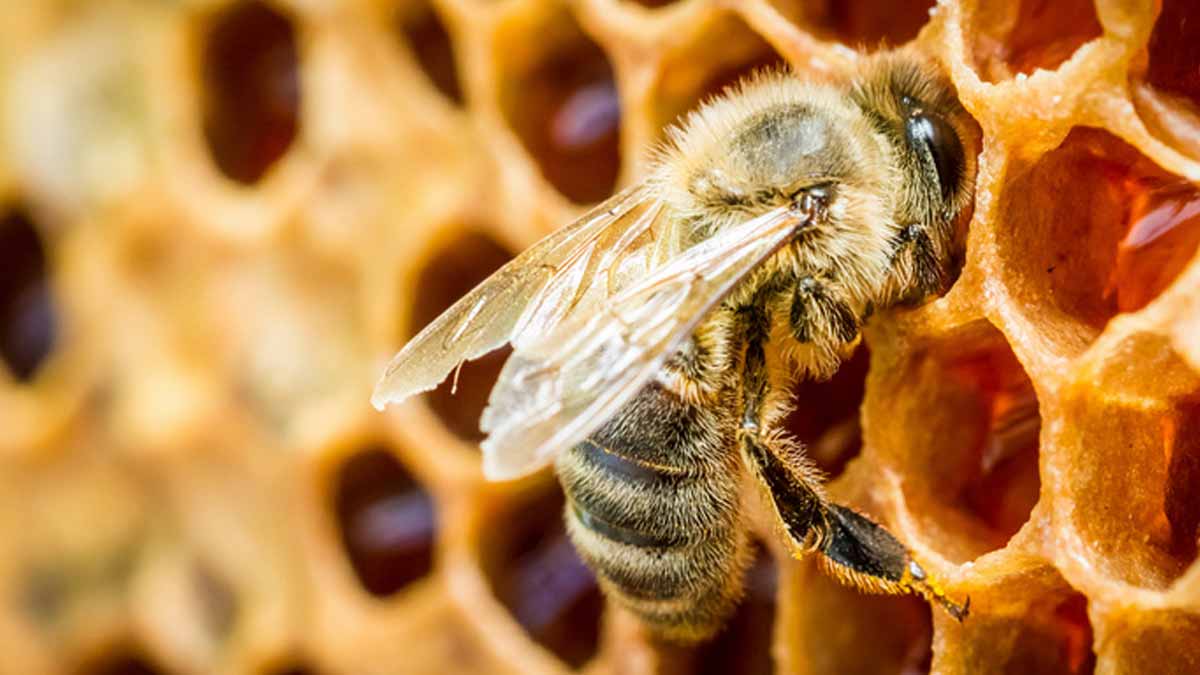A quiet revolution is taking shape inside hives. Scientists say they have cracked the nutritional code that turns fragile colonies into powerhouses, and the early results are stunning. A tailored diet now meets what bees actually need, so brood thrives, and colonies expand fast, while keepers get a practical, scalable tool to support pollination.
Why nutrition sits at the heart of colony strength
Honeybee numbers suffer when flowers dwindle because modern farming and shifting climates limit diverse forage. Pollen should cover growth needs, yet key lipids are often missing in substitutes, so larvae fall behind. Commercial mixes use protein flours, sugars, and oils, but they lack the exact lipid molecules that matter for development.
A multi-institution team led by the University of Oxford, with RBG Kew, the University of Greenwich, and the Technical University of Denmark, set out to fix that gap. Their findings appeared on August 20 in Nature, and they point to a cost-effective, sustainable way to support hives at scale, without harvesting scarce pollen.
Larvae rely on precise sterols transferred by worker nurses. When that composition is incorrect, larval development halts, resistance weakens, and hives battle against parasites, pathogens, and chemical pressure. With nutrition that reflects wild pollen, the breeding cycle remains uninterrupted, so populations persist through harsh periods and recover more rapidly.
How a precision diet puts bees back on track
The team began by mapping what matters most inside the insects, not just in flowers. They dissected nurse workers, isolated tissues with great care, and analyzed sterol fingerprints in pupae and adults. Six compounds stood out as dominant in honeybee tissues: 24-methylenecholesterol, campesterol, isofucosterol, β-sitosterol, cholesterol, and desmosterol.
Next, researchers used CRISPR-Cas9 to re-wire the oleaginous yeast Yarrowia lipolytica. Because this yeast is food-safe and rich in lipids, it naturally suits sterol production. Fermentation in bioreactors produced a balanced sterol mix, which teams dried to a powder. It already supplements aquaculture feeds, so it scales and integrates with existing feed supply chains.
Trials then ran for three months in enclosed glasshouses, so foragers could not mix diets. Colonies fed the sterol-rich yeast reared up to fifteen times more larvae to viable pupae than controls. Brood rearing continued as controls quit near day 90, while larval sterol profiles in bees matched those from natural foraging—evidence that the diet hit the biological target.
What changes inside the hive when nutrition is right
Senior author Professor Geraldine Wright explains that synthetic biology now tackles ecological problems with precision. Because most pollen sterols are not harvestable at scale, keepers could not assemble a complete substitute until now. With fermentation, the right molecules arrive reliably, so brood gets what it needs without raiding plants.
Lead author Dr Elynor Moore compares the shift to moving from empty calories to balanced meals. Where conventional feeds miss essentials, precision fermentation delivers a complete profile at the molecular level. For bees, that means steady brood frames, stronger nurse workers, and a healthier pipeline from egg to pupal stages across the season.
For practice, keepers can pair better feed with integrated pest management. When mites and viruses hit, good nutrition raises resilience, and because timing matters, supplementation can target dearth periods or crop-pollination windows. Costs stay manageable because yeast scales, while results compound as brood continuity supports stable populations and steadier honey flows.
The molecules, the micro-factory, and what follows
Those six sterols—24-methylenecholesterol, campesterol, isofucosterol, β-sitosterol, cholesterol, and desmosterol—made up most of the sterols found in honeybee tissues, according to the team. That list gave designers a clear recipe, so diets could mirror what nurse workers actually pass to larvae during peak rearing inside warm, busy combs.
Professor Irina Borodina notes that Yarrowia lipolytica excels at producing acetyl-CoA-derived compounds like lipids and sterols. Industry already uses it for enzymes, omega-3 fatty acids, steviol glycosides, and pheromones, so scale-up routes exist. Because it is safe and efficient, manufacturers can adapt equipment, shorten timelines, and reduce production risks for feed makers.
Importantly, the yeast biomass brings extra proteins and lipids alongside sterols. Developers can, consequently, investigate comprehensive diets that address macro- and micronutrients simultaneously. As these mixtures evolve, bees might obtain period-specific formulations, while studies monitor resistance, disease burdens, and cold-season survival to optimize concentrations for various climates and resource shortages.
What stronger bees mean for farms and wild nature
Pollinators underpin over 70% of leading food crops, and key sectors rely on managed hives. Professor Phil Stevenson highlights how large pollination events concentrate colonies, which strains local wildflowers. When complete feeds shoulder part of the load, pressure on limited forage eases, so wild bee species and other pollinators gain room to recover.
In the United States, commercial honeybee losses have run near 40–50% per year over the past decade, and could reach 60–70% in 2025. Danielle Downey calls better nutrition a potential game-changer because it buffers multiple stressors at once. As keepers balance habitat work with precise diets, colony survival and business stability both improve.
Before broad use, large field trials must test long-term health, pollination output, and economics across regions. The team expects a route to farms within two years if results hold. The same platform could tailor feeds for other pollinators or farmed insects, so growers, conservationists, and feed makers align around safer, scalable nutrition.
Why this nutrition breakthrough changes the future of hives
This work reframes how we support bees: start with the molecules that matter, then deliver them cleanly and at scale. Because the diet mirrors natural biology, brood stays strong, and colonies keep momentum when flowers run short. With prudent trials and careful rollout, hives can grow, crops can set, and biodiversity can breathe.
